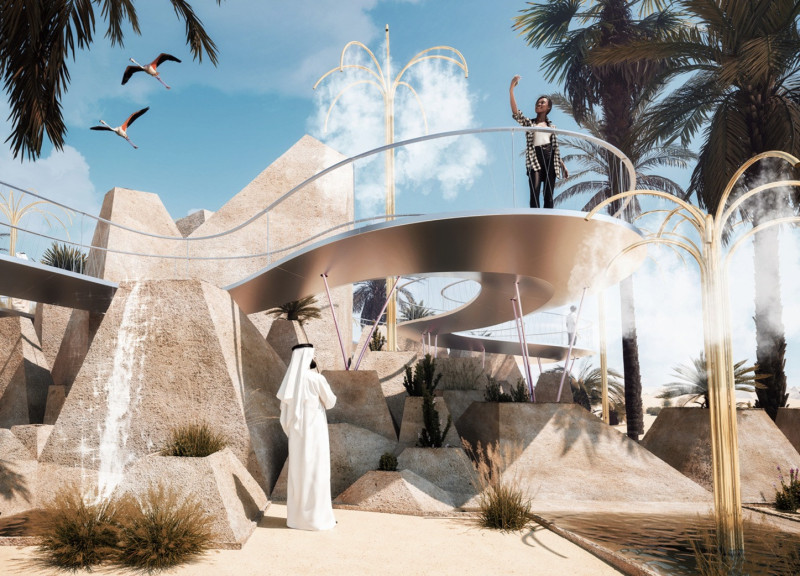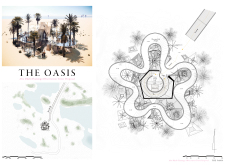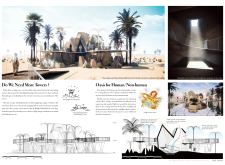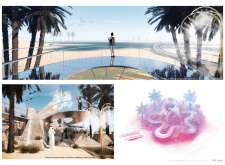5 key facts about this project
The Abu Dhabi Flamingo Observation Tower sits in the Al Wathba Wetland Reserve, designed to serve as a vantage point for observing the rich ecosystem. The structure interacts with its natural surroundings, showcasing a design that merges form with function. The main idea is to blur the line between the architecture and the landscape, making it a meaningful presence in this unique environment.
Design Approach
The design takes inspiration from the local sand dunes, creating a form that feels at home in the landscape. This organic shape allows the tower to harmonize with the natural beauty of the reserve. It enhances the visitor's experience without overshadowing the existing ecological attributes. The tower acts not just as an observation point but as a way to deepen the visitor's connection to nature.
Environmental Considerations
Key to the design is the focus on microclimates that benefit both people and wildlife. Tubular structures are cleverly incorporated to promote natural airflow through a stack effect. They serve practical purposes, providing shade in hot weather and making the environment more comfortable. These features also create spaces that can support local plant life.
Material Selection
Materials play a crucial role in maintaining the integrity and functionality of the tower. The observation deck’s frame is built using steel pipes, which provide strong support while remaining lightweight. The legs of the tower are made from stainless steel rods for added stability. Additionally, the reflective surface composed of stainless steel enhances the relationship between the tower and the environment by capturing light.
Design Features
The observation deck allows for sweeping views of the wetland, highlighting the area’s ecological richness. Arrangements of trees around the structure are thoughtfully designed based on sunlight analysis. This creates a balanced environment with ample shade for visitors. The tower invites exploration and encourages a deeper appreciation of the delicate ecosystems that thrive within the Al Wathba Wetland Reserve.





















































